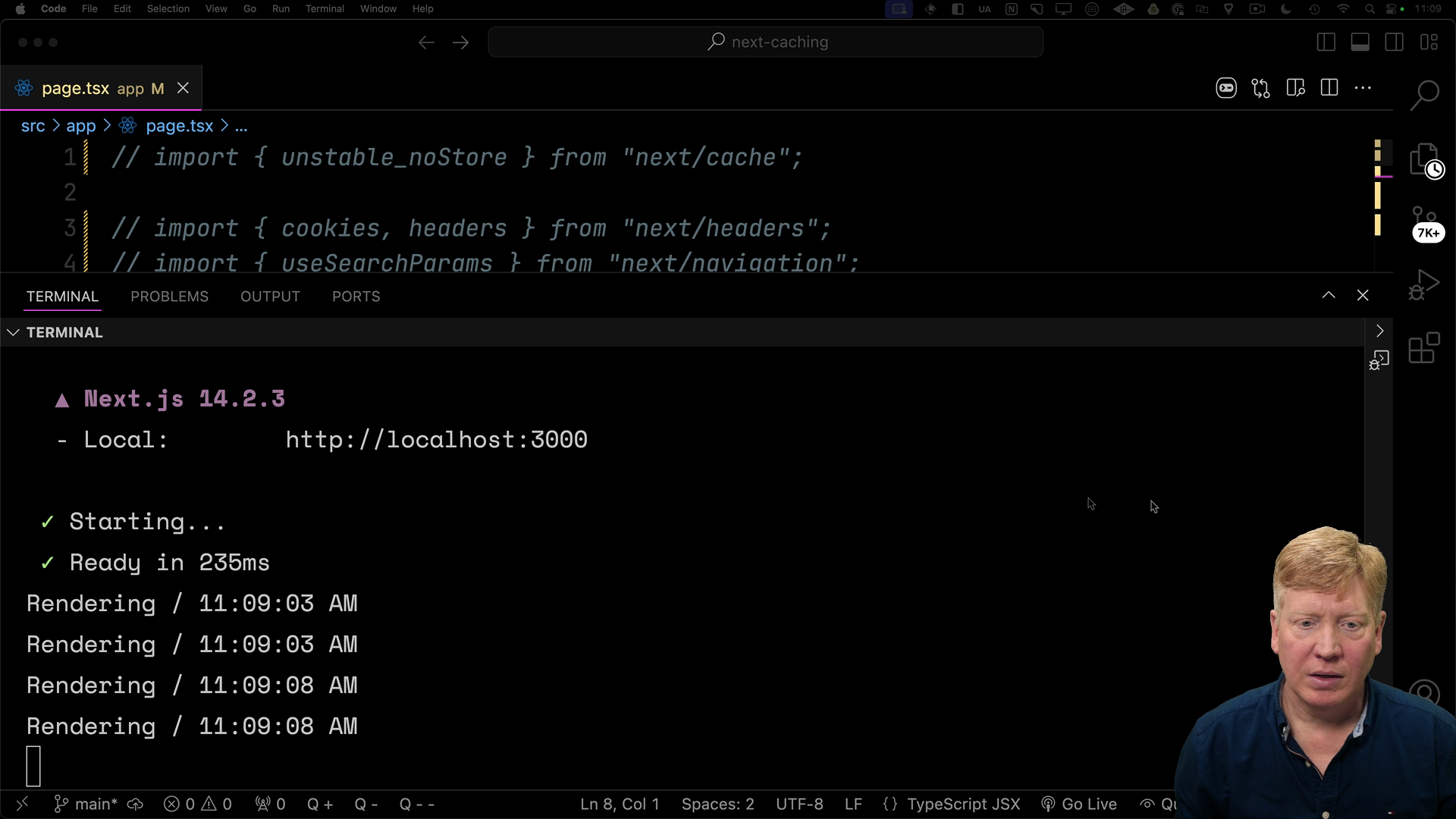We have a static page that shows the current date and time, but it would be good to have it update automatically.
Automatic Revalidation
Let's make it update every 5 seconds.
To do that, we export a revalidate constant, setting its value to 5:
// inside app/page.tsx
export const revalidate = 5
export default function Home() {
...
Now our page will be regenerated every 5 seconds if there is an incoming request.
You can test this in the browser by refreshing. You'll notice that the timestamp updates every 5 seconds.
You can see this in the console as well:

Manually Triggering Revalidation
What if we want to trigger a revalidation manually instead of on a timer?
First, disable the timed revalidation by commenting out the revalidate constant.
Then we'll create a RevalidateHomeButton client component in the app directory:
// inside app/RevalidateHomeButton.tsx
"use client";
import { Button } from "@/components/ui/button";
export default function RevalidateHomeButton({
onRevalidateHome,
}: {
onRevalidateHome: () => Promise<void>;
}) {
return (
<Button onClick={async () => await onRevalidateHome()} className="mt-4">
Revalidate Home
</Button>
);
}
The RevalidateHomeButton component will accept a server action onRevalidateHome as a prop that will be called when the button is clicked.
We can then import the RevalidateHomeButton to the Home component:
// inside app/page.tsx
import RevalidateHomeButton from "./RevalidateHomeButton";
Inside of the page.tsx file, we'll create the async onRevalidateHome function that will trigger the revalidation of the homepage. The "use server"; pragma is used to define it as a server action, and we use the revalidatePath() function to revalidate the root path (/):
export default function Home() {
async function onRevalidateHome() {
"use server";
revalidatePath("/");
}
console.log(`Rendering / ${new Date().toLocaleTimeString()}`);
return (
<main>
<div>{new Date().toLocaleTimeString()}</div>
<RevalidateHomeButton onRevalidateHome={onRevalidateHome} />
</main>
);
}
Now, if you go back to the browser and hit the "Revalidate Home" button, it will trigger a revalidation of the homepage.
Remember, server actions is that they return promises. This means you need to make sure we're using await when calling onRevalidateHome inside of the RevalidateHomeButton component. Otherwise, the revalidation might not happen as expected.
Next, we'll talk about how this full-route caching approach affects API routes.